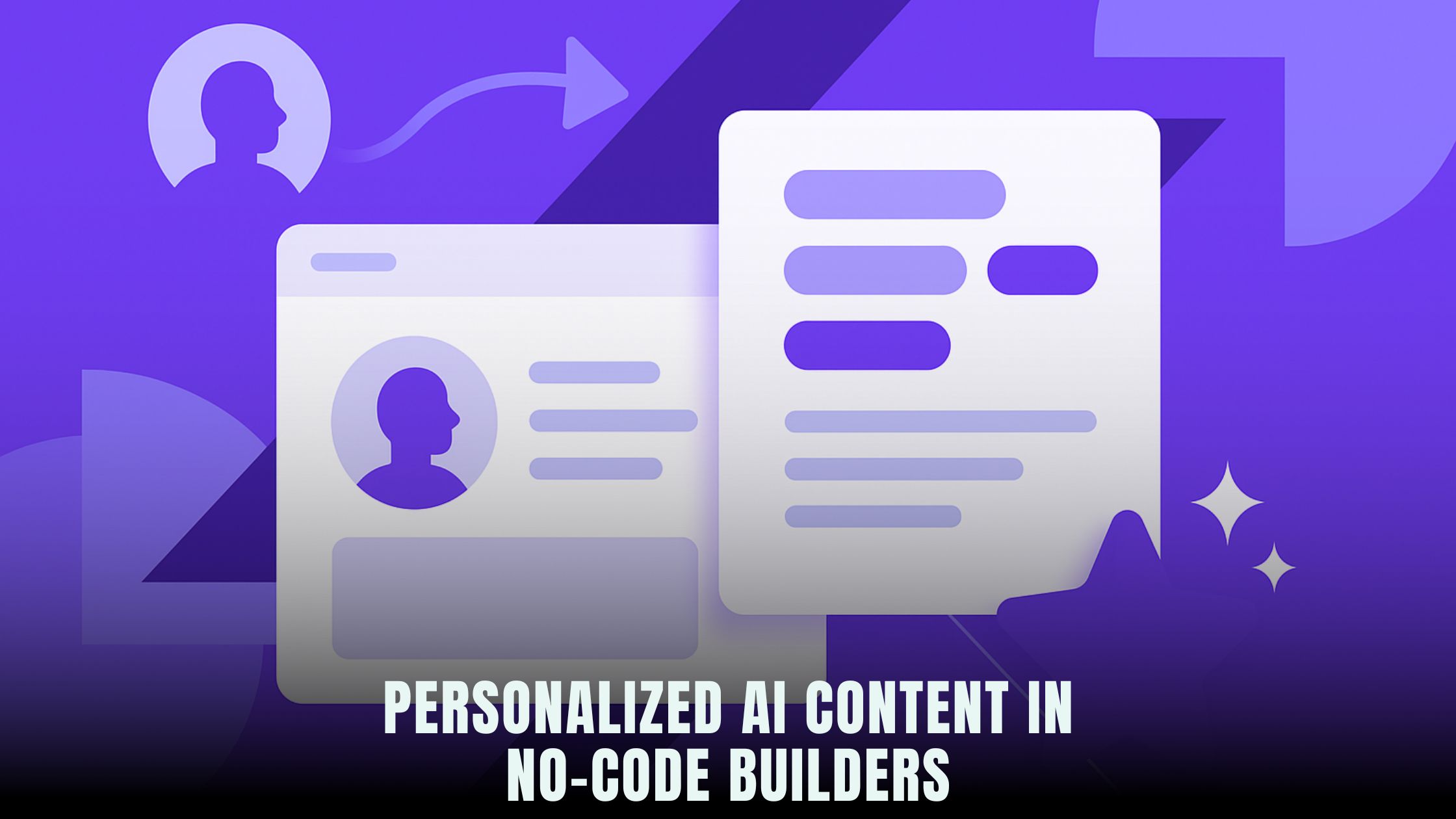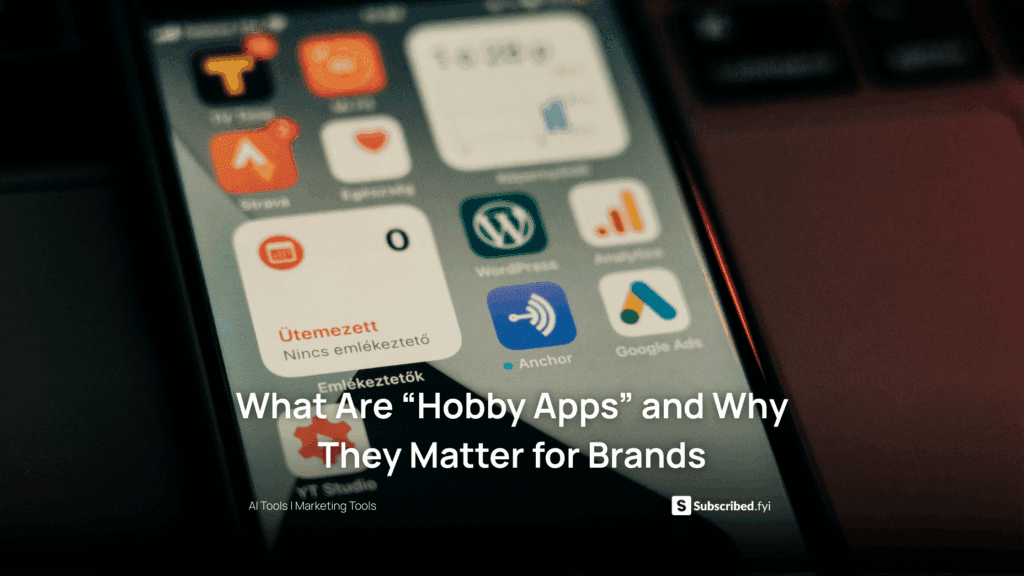What Is Personalized AI Content in No‑Code Builders?
- WebOps Platforms Bug Tracking & Feedback Software Web Development & Design Website Builder


Personalized AI content means the words, images, and layouts on a page adapt to each visitor in real time—no developer required. Modern no-code platforms such as Hostinger Horizons make this practical by combining an AI chat interface with built-in hosting, domains, and a live sandbox for safe testing. If you’re still comparing options, this roundup of AI-Powered Website Builders gives a wider view of the market, but the draw of Horizons is that content rules, translations, and deployment sit together in one workflow.
Why does this matter? People respond to content that feels made for them. A first-time visitor might need quick benefits, while a returning customer wants account shortcuts. A reader from Paris might prefer French copy and euros; a visitor on a slow phone needs a lighter layout. With Hostinger Horizons, you can ask the AI to “show a local currency price if the user is in the EU,” or “swap hero images for mobile shoppers,” then preview the change in the sandbox before publishing. If you like to explore different UI approaches as you plan, the Vibe Coding Directory links to fast prototyping tools you can test alongside Horizons.
From Static Pages to Dynamic Experiences
Traditional sites serve the same content to everyone. Personalized sites react to signals. Location, device type, time of day, referral source, role (guest vs. logged-in), and previous actions all guide what a person sees. Instead of “one hero for all,” you show the right headline, supporting image, and call-to-action for each segment.
In practice, you don’t need a custom engine. You need sensible rules and a safe way to try them. A rule can be simple: “If device = mobile, use a shorter headline.” Another can be deeper: “If the user read two pricing posts, show a comparison block.” A no-code AI builder shines here because you can describe the logic in plain language and get a working test version in minutes.
How No-Code Builders Generate Personalized Content
The modern stack has three parts: a rules layer, AI generation for copy and media, and a preview sandbox. You define segments—like “new visitor,” “signed-in customer,” “US traffic,” or “Spanish browser”—and attach rules. You ask the AI for copy variations that fit your brand voice and set constraints so headlines don’t drift off-brand. Finally, you preview the variants in a sandbox that simulates different users.
If you draft experiments elsewhere, quick ideation tools like Lovable and Bolt help you sketch flows and content blocks rapidly. When you’re ready to merge ideas, you bring them into Hostinger Horizons, connect data sources, and launch on your domain with SSL and CDN baked in.
Signals That Drive Smart Personalization
Personalization starts with clear, privacy-safe signals. Browser language is a strong cue for copy language. Geo hints can inform currency or shipping notes. UTM tags tell you what message a visitor saw before arriving. Device type shapes layout density and image size. Logged-in status unlocks account-aware content, like “Resume your draft.”
You don’t need to use every signal. Pick the few that match your goal. For example, if you sell internationally, language, currency, and shipping time are the top three to adapt. If you run a SaaS, role (trial vs. paid) and last action (invited teammates? hit a usage limit?) matter more than country.
Writing Rules with Natural-Language Prompts
Rules can be scary if you picture code. In a no-code AI builder, you write them in simple prompts. You might tell the system, “For mobile visitors, show a two-line headline and hide the background video.” Or, “If the visitor is a returning reader who hit the pricing page last week, swap the CTA button to ‘See plans’ and show a short savings blurb.”
In Hostinger Horizons, the chat UI turns those prompts into concrete conditions. You can ask, “Create a segment for new visitors from Canada,” then, “Attach a CAD price and show a delivery ETA banner for that segment.” Because the sandbox updates instantly, you see each version side by side and check that nothing breaks on small screens.
Copy and Design that Stay On-Brand
AI makes variations fast, but brand consistency matters. Before you generate anything, define a voice and tone guide: sentence length, active voice, words to use or avoid, and reading level (7th–8th grade works well). Provide a short style kit: brand colors, typography, spacing, and component rules. The AI can follow constraints when you spell them out.
If you want to refine copy with a dedicated editor, tools like Cursor and Windsurf help you iterate on drafts, then you paste the final text back into your builder. Layout exploration tools such as Tempo or V0 can also spark ideas for responsive blocks that adapt well to segments.
Multilingual and Locale-Aware Content
Nothing feels more personal than content in someone’s language. If your audience spans countries, plan your site in at least two languages from the start. Keep URLs clean, use hreflang tags, and swap currency, dates, and measurements. AI translation is fast, but a brief human polish for top pages is worth it.
Here, having internationalization inside your builder helps. In Hostinger Horizons, you can say, “Add Spanish and French,” and it creates translated routes and pairs copy blocks across locales. Ask for region-specific examples or testimonials, and the AI will draft them; you can then edit to ensure accuracy and tone. Because hosting and CDN are part of the platform, page speed stays high across regions.
Common Personalization Patterns You Can Ship Today
A welcome banner that explains shipping times by country. A pricing module that swaps currency and taxes. A hero that changes from “Try free” to “Invite your team” for trial users who already created a project. A blog layout that surfaces local case studies when the reader’s language changes. These small touches add up, making the site feel like a fit for each person.
If you like to brainstorm variants before you set rules, lightweight helpers like Lazy AI and Fine AI can generate alternative headlines and CTA phrasings. You choose the best ones and implement them as variants inside your builder.
Performance and SEO with Personalized UIs
Personalization should not slow pages or hurt rankings. Keep the base HTML lean. Let the server send a good default that works for everyone; then hydrate with dynamic bits based on your rules. Cache images and fonts smartly. Avoid layout shifts when swapping content—reserve space with fixed dimensions and use responsive images.
For SEO, keep critical pages crawlable. Use consistent URLs, canonicals, and metadata per locale. If a bot sees the default language, that’s fine as long as you provide a sitemap with alternate language links. A reliable CDN and SSL also help performance and trust, both of which map to better user signals.
Analytics and A/B Testing for Proof
Personalization should be measured. Set a primary metric for each segment: sign-ups, time on page, add-to-cart, demo requests, or email captures. Split traffic between variants and give the test enough visitors to be confident. Keep one change per test when you can; stacking changes makes it hard to know what worked.
Most no-code platforms let you paste an analytics ID and start tracking. The key is to tag events in context. If you run a “hero copy” test, log which variant each visitor saw and when they converted. This way, you can compare results cleanly. If you prefer to validate copy directions quickly, small 50/50 tests run for a few days can point you toward a winner, and then you can scale.
Privacy, Consent, and Respect
Personalization uses data, so you should respect your visitors. Ask for explicit consent where laws require it, keep only what you need, and avoid dark patterns. If you use cookies or local storage for preferences, offer an easy way to change them. A clear privacy policy builds trust and often boosts conversions on its own.
When you target by location, do it to help the user—not to restrict content without a good reason. When you target by behavior, use it to remove friction, not to push pressure tactics. Long-term brands treat personalization as service, not surveillance.
Troubleshooting Personalization That Misses
If a rule does nothing, check the signal. Is the language set by the browser or the site? Are you reading the right UTM parameter? If a layout looks off on mobile, your variant might have a taller heading; tighten line breaks. If SEO dips, make sure your default content is still full and meaningful; don’t hide key information behind conditions. Use a preview device list in your sandbox and test segments one by one.
Building the Personalization Workflow Step by Step
Start with one page: your home or a top landing page. Define a single segment and a single goal. Create two copy variants and one image swap. Preview in the sandbox as a first-time visitor and as a returning visitor. Confirm that analytics events fire once per load. Publish to a small share of traffic. Watch results for a week. If it’s a win, roll the pattern across similar pages.
As you grow, document rules: segment name, purpose, signals used, variant notes, and the last test date. This simple log keeps efforts focused. You’ll avoid stacking five different rules on a single block and wondering which one fired.
Where Content, Data, and Workflow Meet
Personalization is easier when everything lives together. Your copy lives near your variants, which live near your rules, which live near your preview. When your builder also handles hosting, DNS, SSL, and CDN, deployment becomes a non-issue. That’s the core reason AI-assisted no-code tools have spread: they collapse the long chain of tasks into one screen you can control.
If your team prefers to draft outside and paste later, that’s fine too. You can experiment with copy and components in Lovable, Bolt, Tempo, or V0, then centralize testing and launch in a single system so the data story stays clear.
Two-Paragraph Deep Dive on Hostinger Horizons
Hostinger Horizons turns personalization into a plain-English workflow. You open the AI chat and say, “Create segments for New Visitor, Returning Reader, and Trial User.” Horizons scaffolds the segments, then asks what to change for each. You might reply, “On New Visitor, show benefits and a short explainer; on Returning Reader, swap hero image to a featured post; on Trial User, show ‘Invite your team’ and a progress bar.” The live sandbox lets you test each segment by toggling states—mobile vs. desktop, English vs. Spanish, trial vs. paid—so you see differences instantly. Because Horizons supports 80+ languages, you can say, “Add Spanish and French variants,” and the platform pairs blocks across locales, adds hreflang tags, and keeps URLs clean. Hosting, domain setup, SSL, and CDN come bundled, which keeps performance solid across regions.
Hostinger Horizons also covers the “prove it” side of the work. You can run A/B tests on headlines or CTAs inside the same interface, wire analytics with a simple ID, and watch conversions by segment over time. If you need to roll back, version history lets you return to a stable layout with a click. If you want to tune visual style, you can tell the AI to update design tokens—colors, radius, spacing—without breaking structure. And if you get stuck, expert help is available around the clock. The result is a site that adapts to each visitor while staying easy to run for a small team or solo founder.
Bring Your Site to Life for Each Visitor
Personalization is no longer a developer-only feature. With a clear goal, a couple of segments, and a handful of smart rules, you can make your site feel like it was built for each person. Start small. Make one page great for one segment, and measure the lift. Grow from there. Keep copy simple, images fast, and choices respectful. The more your site adapts to the visitor’s context, the more value they’ll find—and the more they’ll come back.





